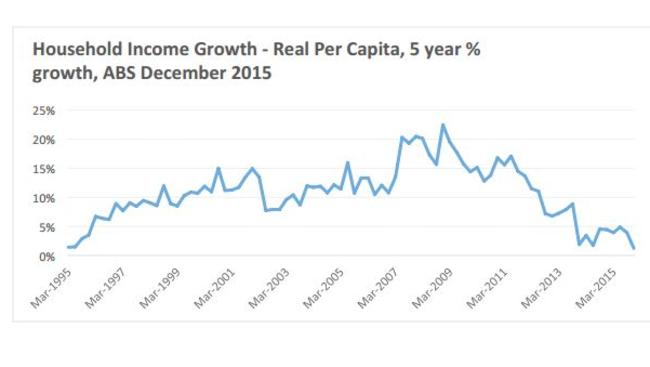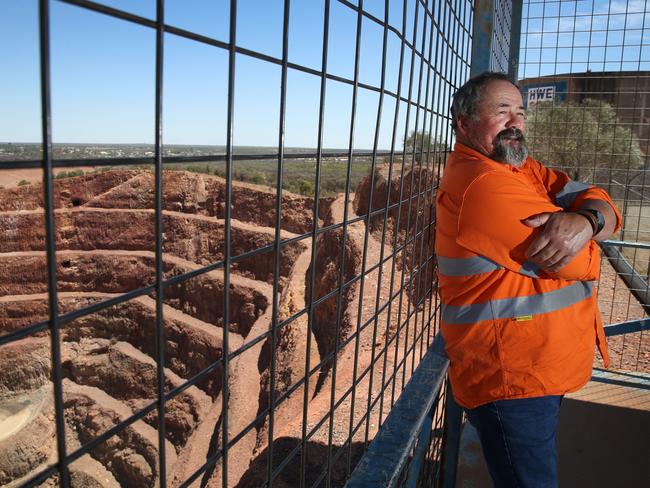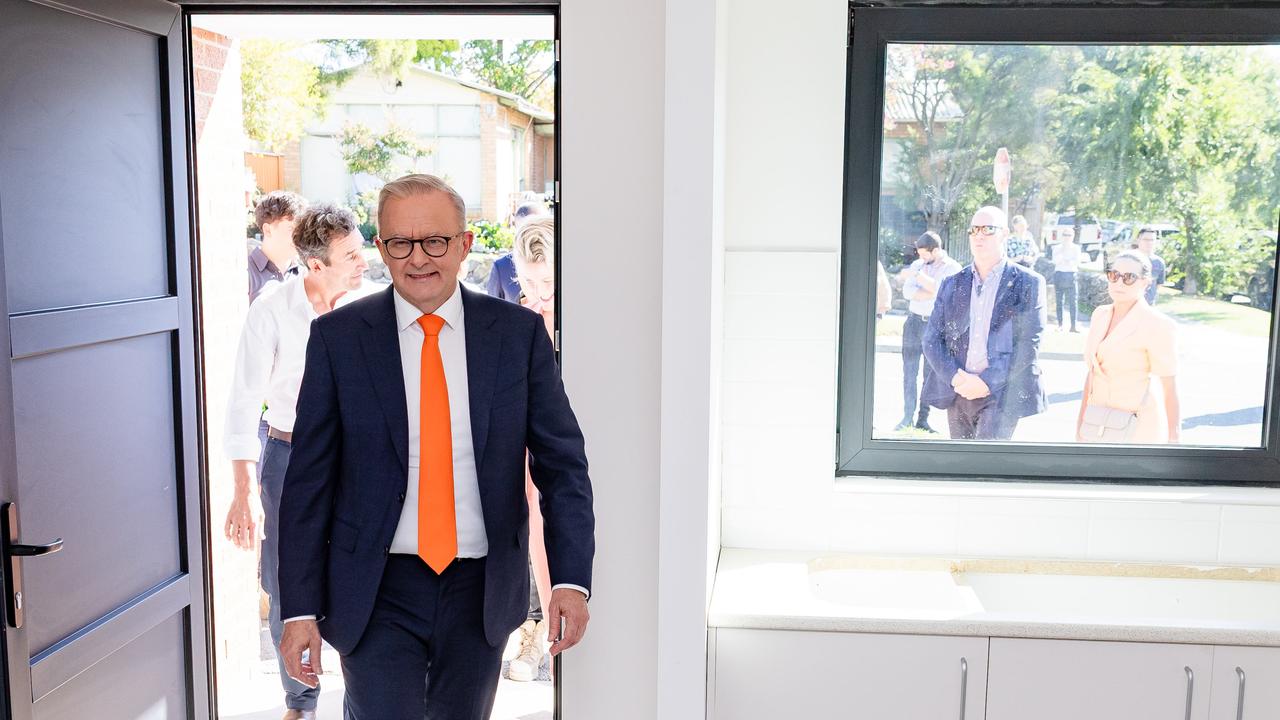Living standards stall as employers refuse to boost wages
IF YOU feel like you’re going backwards financially, you probably are, and it’s been happening for a while. This depressing graph explains why.

JOBS and growth: it’s the mantra that won the Coalition the tightly contested election.
But the Government will have its work cut out for it to satisfy voters’ deep economic anxieties, and this graph illustrates why.
The post-mining economic slowdown is hitting Australians where it hurts the most, with the growth in living standards we’ve been accustomed to facing a serious roadblock.
Wages are not going up fast enough to keep pace with the cost of living, and a new analysis from ANU’s Centre for Social Research and Methods reveals that, in real terms, our standard of living is on the slide.
If you feel like you’re pedalling faster than ever but going backwards, you are probably right. National average fulltime salaries for jobs advertised at Seek.com.au grew just 0.6 per cent in the last financial year, while real living standards — calculated as income adjusted for inflation and population growth — have been on a downward slope since June 2012 when the mining boom reached its peak.
“Since this, peak living standards have declined by 1.5 per cent to December 2015,” Associate Professor Ben Philips wrote in the research note.
“Over a five-year period, we find that growth in living standards are at their lowest point between 2010 and 2015 — even lower than the growth experienced during the last major Australian recession in the early 1990s,” Mr Philips said.
“Australia only managed growth of 1.2 per cent during this period, well down on the strongest period between December 2003 and December 2008 where living standards increased by
22.5 per cent.”

MILLENNIALS FEEL THE SHOCK
The drop is felt all the more keenly by a population accustomed to decades of seemingly endless economic growth.
Millennials in particular are unlikely to remember the previous era when living standards were not growing; between 1990 and 2012, they went up by 53.5 per cent.
But times have changed, and economists are scratching their heads as to why.
NAB chief economist Alan Oster said the mining downturn only partially explained wage stagnation, which persisted despite the fact Australia was enjoying near full employment of 5.7 per cent.
The latest quarterly ABS figures show that private sector wages are sitting at 1.9 per cent annual growth, and 2.5 per cent in the public sector.
“Real wages are doing nothing, basically,” Mr Oster said. “It’s really difficult to know whether that’s temporary or permanent ... I don’t think anybody really understands why.”
He said while there was a question about whether casualisation might be to blame — without sufficient data to make a call on this — “when you look at fulltime wage data in the national accounts it’s also not shooting the lights out.”
“Now you can expect falls in areas like mining, but it’s more than that — it’s everywhere,” Mr Oster said.
“It’s a sort of a global story, it seems to have happened everywhere that people are feeling nervous. It’s not as bad as in some other countries but there are signs of it here.”

FIGHT FOR A RAISE
Whatever the reason, Australian workers face an uphill battle if they want to maintain their living standards.
Recruitment giant Hays’ latest employer survey reveals that just 22 per cent of staff can expect a salary increase of more than three per cent or more in their next review — down from 26 per cent last year — concluding that workers would have to “take matters into their own hands”.
“Employers remain reluctant to offer substantial increases unless absolutely necessary to secure a candidate with skills in short supply,” said Hays Managing Director Nick Deligiannis.
“Despite seven in 10 employers expecting business activity to increase in the year ahead, and permanent headcounts also expected to rise, cost consciousness remains in vogue.”
The survey of 2752 employers of more than 2.6 million employees found that 41 per cent of workers planned to ask for a pay rise in their next review — but whether they’d succeed was another story.
Those most likely to secure a pay rise were employees in professional services, followed by financial services and construction, property and engineering. Workers in the resources sector had a 40 per cent chance of getting no pay rise at all.
THE ‘LUCKY COUNTRY’
According to Seek.com.au, the biggest wage increases for the 2015-16 financial year were in Canberra, where public servants helped push up the territory average by 2.4 per cent.
The worst performer was Western Australia, where wages fell by 1.7 per cent, followed by Tasmania where they fell by 0.6 per cent.
Advertised salaries grew by 1.3 per cent in Victoria, 0.8 per cent in the Northern Territory, 0.8 per cent in South Australia, 0.5 per cent in Queensland and 0.4 per cent in New South Wales.
Seek Employment Managing Director Michael Ilczynski said jobs listed in Design and Architecture topped the website’s national salary chart, with the industry average up five per cent on the back of infrastructure investment.
“The downturn of the mining industry has affected the WA job market and economy,” Mr Ilczynski said.
“Industries that support mining, like engineering and manufacturing, transport and logistics, have also experienced a dip in year on year wage growth to June, down 2 per cent and 1 per cent respectively.”
Western Australia, Tasmania and the Northern Territory were in a “hirer’s market”, he said, with a drop in the Seek Employment Index for these states and territories indicating a higher-than-average number of candidates applying for each job listed.
“In NSW, Victoria, South Australia and the ACT, job hunting conditions for candidates are more aligned, with a reasonable balance between jobs advertised and candidates applying,” Mr Ilczynski said.




